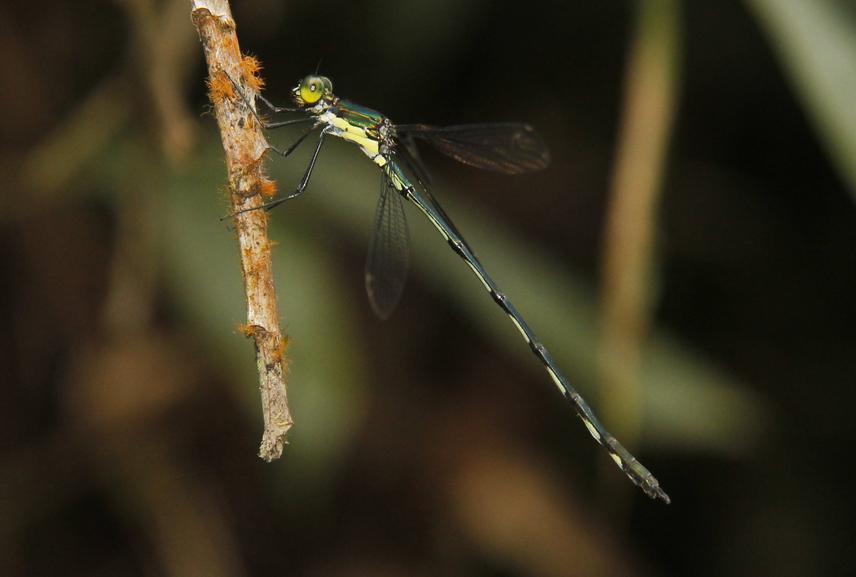Amila Prasanna Sumanapala
The project has three major aims.
1. To study the diversity and distribution of damselflies in the montane zone of Sri Lanka leading to a better conservation assessment of the taxa in the region.
2. To study the potential impact on their distribution ranges with predicted future climatic patterns through species distribution modelling. This will result in providing information to expand or modify protected areas and conservation implementations to mitigate the effects of changing climatic conditions on montane damselflies.
3. Training a group of students and early career nature enthusiasts on conducting studies on Odonata and montane biodiversity and develop their capacity to conservation-oriented research.

Sinhalestes orientalis. Critically Endangered.
Sri Lanka is a part of a global biodiversity hotspot and is a home to a highly diverse fauna and flora with many endemics. The montane zone of Sri Lanka is located in the central part of the country and consist of several major mountain ranges. Majority of the original montane forests has been cleared and fragmented for cultivations and human habitation in the past. However, the remaining montane forests and associated habitats supports a significant amount of endemic biodiversity in the country.
Damselflies are charismatic, diverse and highly endemic group of invertebrates in Sri Lanka with 63 described species and 67% of this being endemic to the country. More than half of Sri Lankan damselflies, including many endemics, are found in the Sri Lankan montane zone while some of them are entirely confined to this zone. These montane damselflies mainly inhabit montane forest streams and marshes.
Despite observed high biodiversity and the threatened status of the habitats, the montane zone of Sri Lanka is still under studied in terms of damselfly diversity. In the mountain regions where preliminary odonatological work has been conducted, many new species discoveries and rediscoveries were recorded in the last couple of years indicating the possibility of further discoveries under more targeted surveys. Many of these damselflies have very specific geographically limited distribution ranges thus they may face even greater threats of extinction in future with the changing climatic patterns as the distribution ranges of many montane taxa is suggested to be shrinking or altered with increasing temperature.
Understanding this, we aim to study,
1. The diversity and distribution of damselflies in the montane zone of Sri Lanka through extensive field surveys.
2. The potential impact on their distribution ranges with predicted future climatic patterns through species distribution modelling.
The results of the study will help us to better understand the diversity of damselflies in the region and their conservation status. It will also provide information to expand or modify protected areas and conservation implementations to mitigate the effects of changing climatic conditions on these taxa.
As a mechanism of strengthening future research and conservation actions on odonates and montane biodiversity, we also plan to conduct two workshops to improve the understanding of students on odonates and montane ecosystems and to build their capacity to conduct conservation-oriented research.